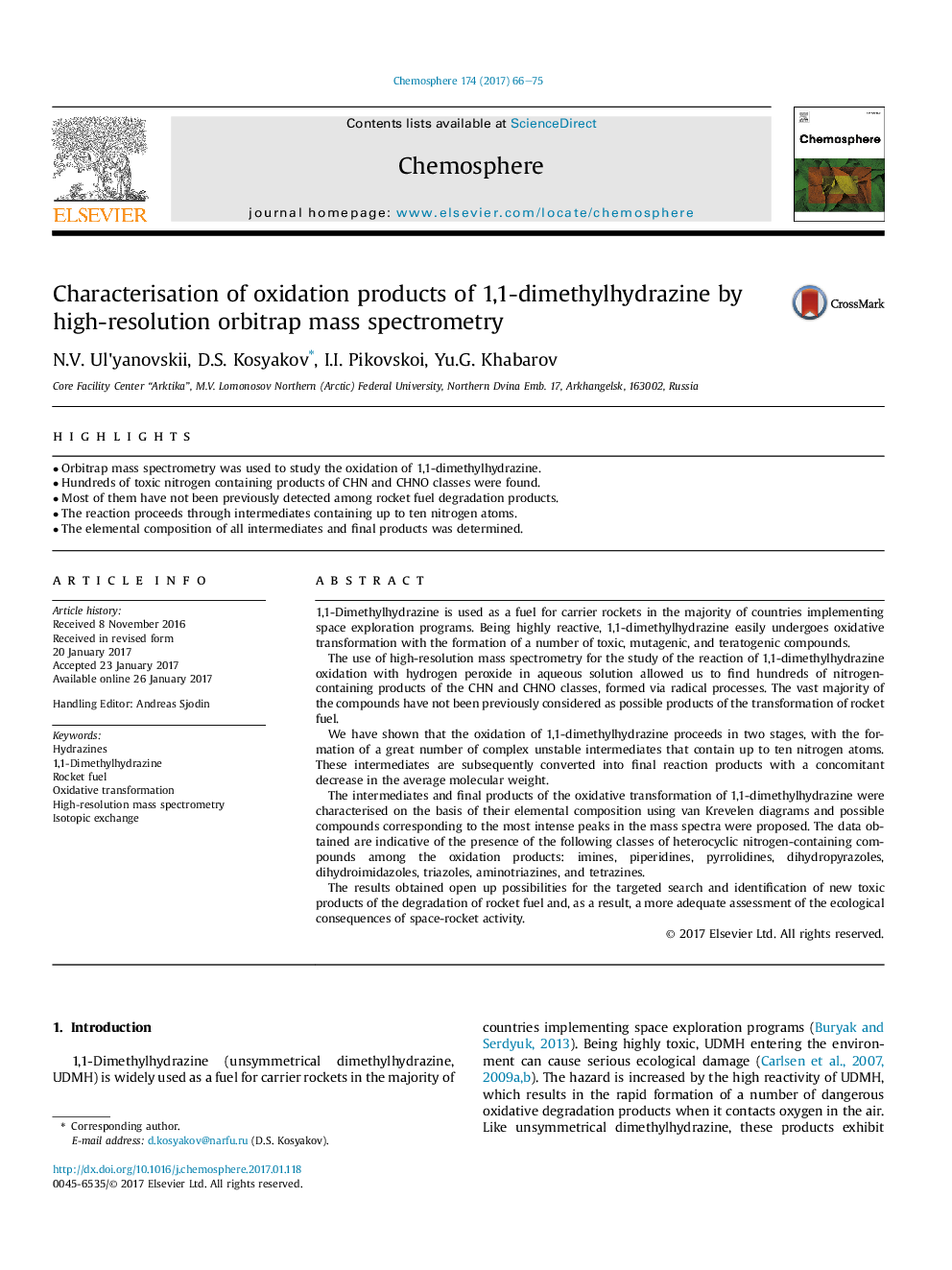| Article ID | Journal | Published Year | Pages | File Type |
|---|---|---|---|---|
| 5747286 | Chemosphere | 2017 | 10 Pages |
â¢Orbitrap mass spectrometry was used to study the oxidation of 1,1-dimethylhydrazine.â¢Hundreds of toxic nitrogen containing products of CHN and CHNO classes were found.â¢Most of them have not been previously detected among rocket fuel degradation products.â¢The reaction proceeds through intermediates containing up to ten nitrogen atoms.â¢The elemental composition of all intermediates and final products was determined.
1,1-Dimethylhydrazine is used as a fuel for carrier rockets in the majority of countries implementing space exploration programs. Being highly reactive, 1,1-dimethylhydrazine easily undergoes oxidative transformation with the formation of a number of toxic, mutagenic, and teratogenic compounds.The use of high-resolution mass spectrometry for the study of the reaction of 1,1-dimethylhydrazine oxidation with hydrogen peroxide in aqueous solution allowed us to find hundreds of nitrogen-containing products of the CHN and CHNO classes, formed via radical processes. The vast majority of the compounds have not been previously considered as possible products of the transformation of rocket fuel.We have shown that the oxidation of 1,1-dimethylhydrazine proceeds in two stages, with the formation of a great number of complex unstable intermediates that contain up to ten nitrogen atoms. These intermediates are subsequently converted into final reaction products with a concomitant decrease in the average molecular weight.The intermediates and final products of the oxidative transformation of 1,1-dimethylhydrazine were characterised on the basis of their elemental composition using van Krevelen diagrams and possible compounds corresponding to the most intense peaks in the mass spectra were proposed. The data obtained are indicative of the presence of the following classes of heterocyclic nitrogen-containing compounds among the oxidation products: imines, piperidines, pyrrolidines, dihydropyrazoles, dihydroimidazoles, triazoles, aminotriazines, and tetrazines.The results obtained open up possibilities for the targeted search and identification of new toxic products of the degradation of rocket fuel and, as a result, a more adequate assessment of the ecological consequences of space-rocket activity.
